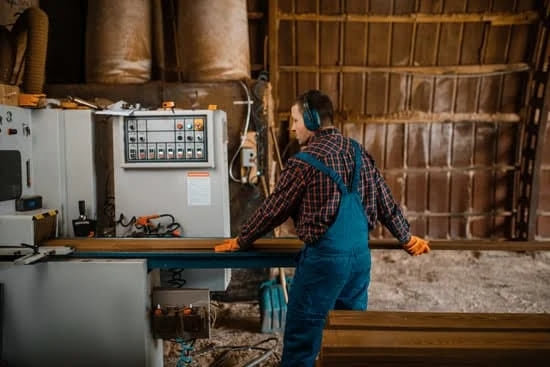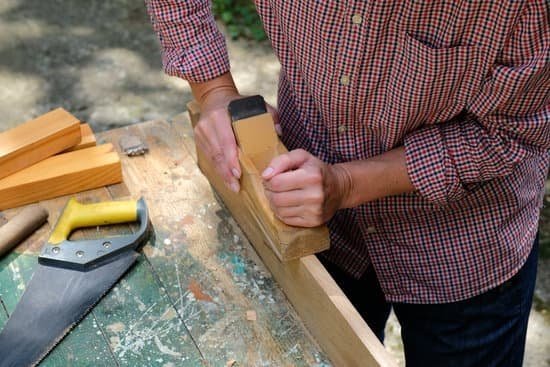How safe are kerosene heater woodworking shops? This article delves into the popularity of using kerosene heaters in woodworking shops and addresses the safety concerns surrounding their usage. It is essential to assess the risks associated with these heaters, including fire hazards, potential combustion accidents, and carbon monoxide emissions. However, by implementing necessary safety measures and precautions, it is possible to minimize these risks and create a secure woodworking environment.
Kerosene heaters have become increasingly popular among woodworking enthusiasts due to their affordability and ability to provide efficient heat in colder months. However, safety concerns often arise when it comes to their usage in enclosed spaces such as woodworking shops. It is important to identify and understand the potential hazards posed by kerosene heaters.
This article aims to explore the various risks associated with using kerosene heaters in woodworking shops, such as fire hazards and the dangers of carbon monoxide emissions. By understanding these risks, woodworkers can take appropriate measures to minimize them and ensure a safe working environment.
Assessing the Risks
The use of kerosene heaters in woodworking shops presents various risks that need to be carefully considered. It is important for woodworkers to understand these potential hazards in order to prioritize their safety and minimize the chances of accidents or injuries. This section will examine some of the main risks associated with kerosene heaters in woodworking shops and highlight the importance of taking necessary precautions.
One of the primary concerns when using a kerosene heater in a woodworking shop is the risk of fire. Kerosene is a highly flammable fuel, and if mishandled or improperly used, it can cause combustion accidents. Fire hazards can arise from improper refueling procedures, accidental spills, or malfunctioning equipment.
Woodworking shops often have combustible materials such as sawdust and wood chips, which can contribute to an increased risk of fire. It is crucial for woodworkers to be aware of these risks and take appropriate measures to prevent fires.
In addition to fire hazards, another significant danger associated with kerosene heaters is carbon monoxide (CO) emissions. Kerosene combustion produces carbon monoxide gas, which is colorless, odorless, and lethal when inhaled in high concentrations. Woodworking shops are typically enclosed spaces with limited ventilation, making them susceptible to CO buildup if proper precautions are not taken.
Carbon monoxide poisoning symptoms can range from headaches and dizziness to more severe effects like loss of consciousness and even death. This emphasizes the importance of understanding and addressing the dangers posed by carbon monoxide emissions from kerosene heaters.
| Risk | Key Points |
|---|---|
| Fire Hazards | – Improper refueling procedures can lead to accidental spills and fire incidents.
|
| Carbon Monoxide Emissions | – Kerosene combustion produces carbon monoxide gas.
|
By recognizing these risks, woodworkers can take necessary precautions to mitigate the potential hazards associated with kerosene heaters in their woodworking shops. This includes implementing safety measures such as proper ventilation, regular monitoring of carbon monoxide levels, and maintaining a clean workspace.
Additionally, it is important for woodworkers to ensure that they have access to appropriate fire extinguishing equipment and smoke detectors within the shop. By understanding and addressing these risks, woodworkers can create a safer working environment while still benefiting from the use of kerosene heaters in their woodworking pursuits.
Safety Measures
When setting up a kerosene heater woodworking shop, it is crucial to prioritize safety measures. By taking the necessary precautions, you can minimize the risks associated with using kerosene heaters and create a safe working environment. Here are some important safety measures to consider:
- Proper Ventilation: Adequate ventilation is essential when using a kerosene heater. Make sure your woodworking shop has proper ventilation systems in place to ensure fresh air circulates properly. This will help prevent the buildup of carbon monoxide, which can be dangerous if inhaled in high concentrations. Consider installing exhaust fans or opening windows and doors while operating the heater.
- Carbon Monoxide Monitoring: To further ensure safety, it is important to monitor carbon monoxide levels in your woodworking shop. You can do this by installing carbon monoxide detectors near the kerosene heater and other potential sources of combustion such as power tools. Regularly check and replace the batteries in these detectors to maintain their effectiveness.
- Clean Workspace and Regular Maintenance: Maintaining a clean workspace not only enhances productivity but also reduces fire hazards in your woodworking shop. Keep flammable materials away from the kerosene heater and clean up any wood shavings or sawdust regularly. Additionally, follow proper maintenance procedures for your kerosene heater, including regular cleaning and inspection. This will help identify any potential issues before they become safety hazards.
By implementing these safety measures, you can significantly reduce the risks associated with using a kerosene heater in your woodworking shop. Prioritizing proper ventilation, monitoring carbon monoxide levels, and maintaining a clean workspace will go a long way in creating a safe environment for both you and your projects.
- Ensure adequate ventilation through exhaust fans or opening windows.
- Install carbon monoxide detectors near potential sources of combustion.
- Keep the workspace clean from flammable materials and conduct regular maintenance on the kerosene heater.
Choosing the Right Kerosene Heater
Safety Features to Prioritize
When selecting a kerosene heater for a woodworking shop, it is crucial to prioritize safety features. One of the most important safety features to look for is tip-over protection. This feature ensures that if the heater is accidentally knocked over, it will automatically shut off to prevent fires or other accidents. Additionally, heaters with overheat protection are essential as they will cut off power if the internal temperature becomes too high, reducing the risk of combustion.
Appropriate Heater Size
Choosing the right-sized kerosene heater for your woodworking shop is also key in ensuring safety. Using an undersized heater can lead to inadequate heating and may tempt users to improperly operate the unit, such as using flammable fuel sources other than kerosene.
On the other hand, an oversized heater can potentially produce excessive heat and lead to overheating hazards. Therefore, it is important to consult the manufacturer’s guidelines or seek advice from professionals when determining the appropriate size of the heater based on the dimensions of your woodworking shop.
Fuel Efficiency and Emissions
In addition to safety features and appropriate sizing, it is also worthwhile to consider fuel efficiency and emissions when choosing a kerosene heater. Opting for a model that consumes fuel efficiently not only helps reduce environmental impact but can also save money by minimizing fuel consumption.
Furthermore, selecting a kerosene heater with low carbon monoxide emissions plays a crucial role in maintaining a safe working environment. Some newer models are designed with advanced combustion technology that produces fewer emissions compared to older models, making them a safer choice.
By taking these factors into consideration when choosing a kerosene heater for your woodworking shop, you can ensure both comfort and safety in your workspace. Remember that prioritizing safety features like tip-over protection and overheat protection reduces the risk of accidents and potential fires. Properly sizing the heater according to your shop’s dimensions helps maintain a balanced temperature without compromising safety. Additionally, selecting a fuel-efficient model with low emissions contributes to creating a healthier working environment.
Building a Secure Setup
When setting up a woodworking shop that utilizes kerosene heaters, it is crucial to prioritize safety and create a secure environment. The layout and organization of the workspace play a significant role in minimizing the risks associated with kerosene heater usage. Here are some key considerations for building a safe woodworking shop:
- Install Fire Extinguishers and Smoke Detectors: To swiftly respond to potential fires, it is essential to have fire extinguishers strategically placed throughout the shop. Ensure that they are easily accessible and regularly inspected and maintained. Additionally, smoke detectors should be installed at multiple locations to provide immediate alerts in case of fire.
- Proper Tool Storage: Keeping your tools organized not only contributes to an efficient workspace but also reduces the risk of accidents. Use racks, pegboards, or drawers to store tools when they are not in use. Make sure that sharp objects are securely stored and take necessary precautions against tool-related injuries.
- Ensure Electrical Safety: Woodworking shops require adequate electrical setups to power various tools and equipment. To prevent electrical hazards, it is crucial to have proper grounding and wiring systems in place. Regularly inspect electrical cords for any signs of wear or damage, and promptly repair or replace them as needed.
- Implement Safe Work Practices: Establishing safe work practices is vital for maintaining a secure woodworking environment. Train employees or workshop participants on proper handling techniques for both tools and kerosene heaters. Emphasize the importance of wearing appropriate personal protective equipment (PPE), such as safety glasses, gloves, and dust masks.
- Create Clear Pathways: Cluttered work areas can lead to accidents, so strive to maintain clear pathways throughout the shop floor. This includes avoiding excessive tool or material storage in walkways and ensuring that cables or hoses are neatly arranged out of harm’s way.
By following these guidelines, woodworkers can significantly reduce the risks associated with kerosene heater usage in their shops. Building a secure setup not only protects individuals from potential accidents but also allows for a productive and comfortable working environment.
Emergency Response
Educating Readers on Emergency Protocols and Procedures
In the event of a kerosene heater-related incident, it is crucial to have emergency protocols and procedures in place to ensure the safety of everyone in the woodworking shop. This starts with educating yourself and all shop occupants on what to do in case of an emergency. Make sure everyone knows where the exits are located, as well as any designated meeting points outside the building.
Importance of Having a Fire Escape Plan
One important aspect of emergency response is having a well-thought-out fire escape plan specifically tailored for your woodworking shop. This plan should include clear instructions on how to safely exit the building in case of a fire. Assign responsibilities to individuals who will assist in ensuring that everyone is accounted for during an evacuation. Practice this fire escape plan regularly so that it becomes second nature to everyone.
Highlighting the Significance of Regular Fire Extinguisher Training
A kerosene heater woodworking-tools/” target=”_blank” rel=”follow noopener”>woodworking shop should have readily accessible fire extinguishers positioned strategically throughout the space. It is not enough to simply have these extinguishers available; proper training on their usage is essential. Regularly conduct fire extinguisher training sessions so that all members of the woodworking shop understand how to operate a fire extinguisher correctly. In addition, make sure that all individuals are aware of where each fire extinguisher is located within the shop.
Having Emergency Contact Information Readily Available
Another important aspect of emergency response is having emergency contact information readily available within the woodworking shop. Ensure that there is a visible list or sign displaying important contact numbers, such as those for local emergency services and utility companies, posted prominently so that they can be easily accessed during an emergency situation. Additionally, make sure all occupants are aware of this information and know where to find it.
By being prepared for worst-case scenarios and having clear emergency protocols and procedures in place, woodworking shop owners can help to ensure the safety of themselves, their employees, and their valuable equipment. It is important to regularly review and update these emergency plans as necessary to account for any changes in the shop layout or occupancy. Taking these steps will contribute to a safe working environment and provide peace of mind while using a kerosene heater.
Other Heating Options
When considering the safety of a woodworking shop, it is important to explore alternative heating options to kerosene heaters. While kerosene heaters may be popular due to their affordability and portability, there are alternative options that may prove to be safer in the long run. This section will introduce some alternative heating options that can be considered.
One alternative heating option is electric heaters. Electric heaters are considered safer compared to kerosene heaters because they do not produce carbon monoxide emissions or have an open flame. They also eliminate the risk of combustion accidents and fire hazards associated with kerosene heaters. Electric heaters can be easily controlled using a thermostat, allowing for precise temperature regulation in the woodworking shop.
Another alternative worth considering is radiant heaters. These heaters use infrared radiation to heat objects directly without heating the air in the room. This makes them highly efficient and allows for targeted heat distribution. Radiant heaters are often equipped with safety features such as tip-over protection and overheat protection, ensuring a safe working environment.
| Heating Option | Advantages | Disadvantages |
|---|---|---|
| Electric Heaters | – No carbon monoxide emissions
| – Higher electricity usage
|
| Radiant Heaters | – Efficient heat distribution
| – Direct heat may cause discomfort for individuals in close proximity
|
It is essential to choose the most suitable heating option based on individual workshop needs. Factors such as the size of the workspace, power availability, and budget should be considered. Regardless of the heating option chosen, it is crucial to prioritize safety and make informed decisions for the well-being of the woodworking shop.
Conclusion
In conclusion, it is clear that while kerosene heaters can provide a comfortable working environment in woodworking shops, it is crucial to prioritize safety. Throughout this article, we have explored the various risks associated with using kerosene heaters in these settings and have provided important safety measures to minimize those risks.
First and foremost, proper ventilation is essential to prevent carbon monoxide build-up. Regularly monitoring carbon monoxide levels and ensuring a clean workspace are crucial steps in maintaining a safe atmosphere. Additionally, selecting the right kerosene heater with safety features such as tip-over and overheat protection is vital.
Creating a secure setup in the woodworking shop is equally important. Installing fire extinguishers and smoke detectors, along with practicing proper tool storage and electrical safety, can greatly reduce the risk of accidents. It is also necessary to be prepared for emergency situations by having a fire escape plan and readily available emergency contact information.
While kerosene heaters may be popular in woodworking shops, there are alternative heating options that could potentially offer a safer solution. Electric heaters and radiant heaters are worth considering, as well as exploring other alternatives that suit individual workshop needs.
Frequently Asked Questions
What is the safest heater for a woodshop?
The safest heater for a woodshop would be an electric heater. Electric heaters do not produce any flames or emit any fumes, making them a suitable choice for indoor spaces like woodshops.
They are typically built with safety features such as automatic shut-off switches and temperature controls to prevent overheating. Additionally, electric heaters are easier to control and maintain a steady temperature, which is crucial in ensuring the safety of your woodshop.
Can I use a kerosene heater in my shop?
It is generally not recommended to use a kerosene heater in a shop, especially an enclosed space like a woodshop. Kerosene heaters rely on combustion to produce heat, which means they generate flames and release potentially harmful fumes such as carbon monoxide and nitrogen dioxide.
These fumes can build up in poorly ventilated areas, leading to serious health risks or even death from carbon monoxide poisoning. Therefore, it is advisable to explore alternative heating options that prioritize safety and minimize the risks associated with using kerosene heaters.
Can fumes from a kerosene heater be harmful?
Yes, fumes from a kerosene heater can be harmful if proper precautions are not taken. Kerosene heaters emit combustion byproducts including carbon monoxide and nitrogen dioxide when in use. Carbon monoxide is particularly dangerous as it is odorless, colorless, and highly toxic when inhaled in high concentrations.
Prolonged exposure to these fumes can lead to symptoms like headache, dizziness, nausea, confusion, or even death in severe cases. To ensure safety when using a kerosene heater, it is essential to provide adequate ventilation by opening windows or using fans and never leave the device unattended inside an enclosed space without appropriate ventilation measures in place. Regularly servicing the heater and ensuring proper fuel usage also contribute to minimizing potential hazards associated with using a kerosene heater safely.

Hi everyone! I’m a woodworker and blogger, and this is my woodworking blog. In my blog, I share tips and tricks for woodworkers of all skill levels, as well as project ideas that you can try yourself.





